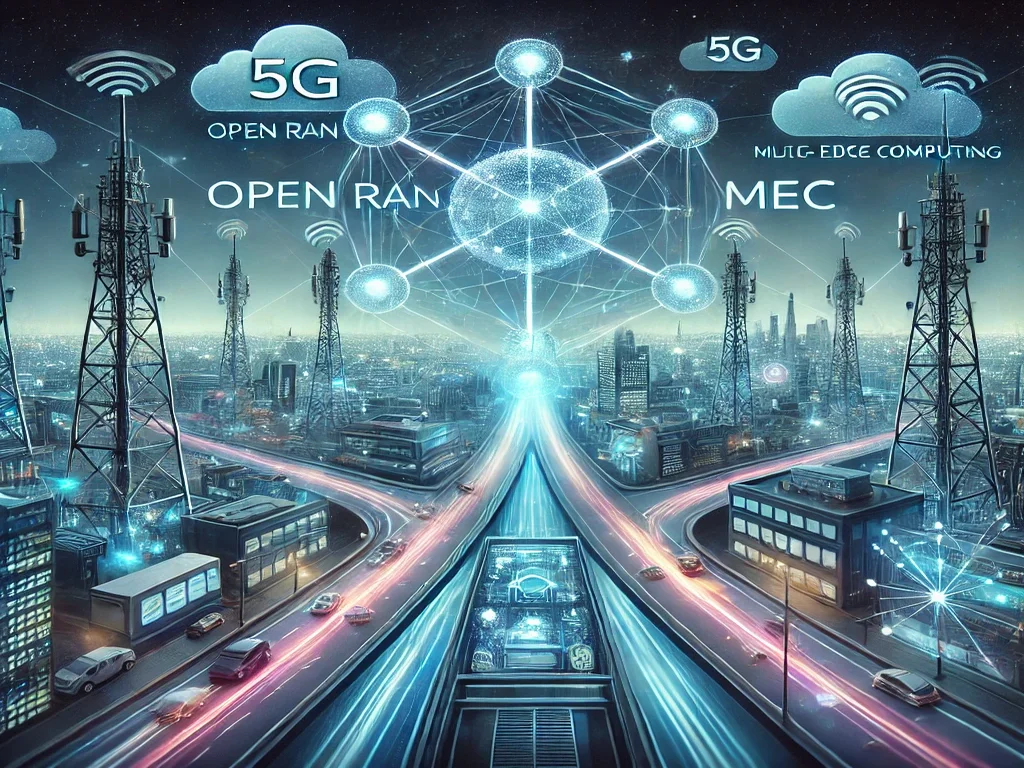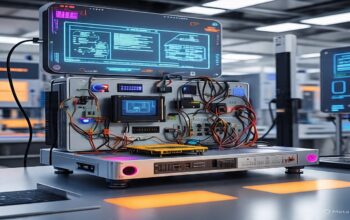The world of mobile networks is changing at warp speed. Two technologies doing this transformation are Open RAN and MEC, or Multi-Access Edge Computing. They jointly promise to create faster, more flexible, and efficient networks. However, to reach their full potential, they require being in smooth harmony with one another. This article discusses the importance of Open RAN and MEC interoperability, looking into what it means, what it entails, and all the exciting opportunities it holds.
Covered Contents
ToggleWhat is Open RAN?
The Open RAN concept has attempted to break vendor lock-in while building mobile networks. Base stations and radios used to be developed in-house, by a single company in the case of mobile networks. In the past, using open standards and interfaces has altered the whole ecosystem since Open RAN will enable the use of base station and radio components developed by multiple vendors. Flexibility increases while reducing the costs of procurement and installation.
The main concept of Open RAN is about unbundling hardware and software layers. Operators can update or replace certain components within the network without affecting the entire system. Open RAN also promotes innovation since it throws open the market to new vendors, leading to competition and offering more options to mobile network operators.
What is MEC?
MEC stands for Multi-Access Edge Computing. MEC brings computation closer to the user at the edge of the network. MEC allows local processing of data instead of processing in a distant data center. It won’t increase latency but enhance the speed of the network.
For instance, in the case of a mobile application or playing games, MEC enables your device to connect to a nearby computing resource instead of faraway servers. This is significant for applications such as virtual reality, autonomous driving, and real-time gaming that are sensitive to low latency.
MEC also improves the efficiency of using network resources. The reason for this is that processing data is done at the edge rather than sending it back and forth to a central server; thus, it decreases network congestion leading to better overall performance.
For More Explanation:
What is Mobile Edge Computing? Let’s Explore How It Works!
The Need for Interoperability
Each has its benefits, but both can only fully be exploited when both are combined. It is where Open RAN flexibility is integrated with the very low latency of MEC that a more efficient, dynamic, and responsive mobile network is created.
Interoperability between Open RAN and MEC is important for several reasons:
Better Network Performance: MEC offers localized processing, reducing latency. In conjunction with Open RAN‘s optimization and management of network traffic, it creates a network that is faster and more reliable to support applications that have a high demand for it.
Cost Efficiency: Open RAN reduces the cost of deploying and maintaining a network by using multi-vendor solutions. When MEC is integrated, it allows operators to take advantage of edge computing resources without having to invest in a large-scale infrastructure overhaul.
Flexibility and Scalability: With Open RAN, it is possible to build networks modularly. For MEC, this flexibility extends to the edge and would enable a quicker and more flexible deployment with the capability of scaling up or down depending on demand.
Enhanced User Experience: As such, this blend of flexibility in Open RAN with local processing in MEC will reduce lag, increase speeds, and allow for real-time applications such as autonomous vehicles, AR/VR, and IoT devices.
Read More:
10 Must-Have Wearable IoT Devices for 2025
Challenges to the Interoperability of Open RAN and MEC
There are numerous benefits to Open RAN and MEC working together. Achieving full interoperability is, however, not without challenges. Some of the major ones include:
Standardization: Open RAN and MEC are both open standard-based. Those standards are, however still under development. Both of the technologies should better have closer aligned standards to become effectively interoperable. Integration would require developing common interfaces and protocols over time.
Complexity in Integration: With Open RAN, multiple-vendor environments can be encouraged, but complex integration among different technologies within one system will be a challenge. Integration among components coming from different vendors may not always operate seamlessly without causing significant disruption.
Security Concerns: The increased openness and flexibility of Open RAN and MEC introduce potential security vulnerabilities. Multiple vendors and distributed computing at the edge create more points of access that could be targeted by cyberattacks. Ensuring robust security measures and practices will be essential to maintaining network integrity.
This needs good orchestration for handling multiple vendors and for handling distributed resource computing. More complexity on its own would be called upon from sophisticated management systems since simultaneous managing of Open RAN with that of MEC will require greater expertise.
Viewpoint of Industry Analysts on the Issue Interoperability in Open RAN and MEC
Experts reveal that Open RAN and MEC integration could mean a turnaround in mobile operators.
An industry analyst at Gartner commented, “The promise of Open RAN and MEC lies in decentralizing computing power and reducing the dependence on central infrastructures. In the right implementation, they are poised to offer an agile, scalable, and efficient network.“
Another expert, Dr. Maria Williams, a Senior Engineer at Intel, pointed out that interoperability is a crucial issue: “Achieving seamless interoperability between Open RAN and MEC is essential for unlocking the full potential of 5G networks. It will allow operators to offer better services, lower costs, and prepare for future demands such as smart cities and the IoT revolution.“
Overcoming Interoperability Challenges: Solutions
Despite the challenges, there are many ways to overcome them and ensure successful interoperability between Open RAN and MEC.
Collaboration and Ecosystem Building: A collaborative approach between operators, vendors, and standards organizations is essential. Work together to set common standards and open interfaces to avoid fragmentation and to make integration easier.
Modular Solutions: Other companies are also working on modular solutions that simplify the integration of Open RAN and MEC. These solutions could make it easier to reduce the integration complexity of many different technologies and vendors in one network.
Advanced Security Frameworks: As the system opens up, security becomes the priority. The end-to-end encryption and secure access controls of both Open RAN and MEC require the development of robust security frameworks that will prevent cyber threats against the network.
AI and Automation: The use of artificial intelligence (AI) and automation tools can streamline network management. AI can help optimize traffic, predict failures, and automate tasks like load balancing. This makes it easier to manage the complexity of combining Open RAN and MEC.
The Future of Open RAN and MEC Interoperability
Open RAN and MEC interoperability has much hope in its future. It will be on a bright rise, as with the further expansion of 5G networks, this will only need to expand the horizon for flexible high-performance solutions that integrate Open RAN with MEC.
With greater industry cooperation, continuous standards development, and further technological innovation, Open RAN and MEC will probably be the cornerstones of future generations of mobile networks. Together, they will probably change any industry from health through amusement to transportation.
Conclusion
Open RAN, along with the MEC, creates interoperability very important to making the next mobile generation. Challenges exist, but the great benefits that might be seen will be worth noting. They’ll enhance network quality, cut operational costs, and deliver improved consumer experiences globally. As we stay innovative, share ideas, and invest in R&D, I believe we’ll be entering the next mobile future. Mobile Networks are going open, flexible, and faster than anyone has ever hoped for.


